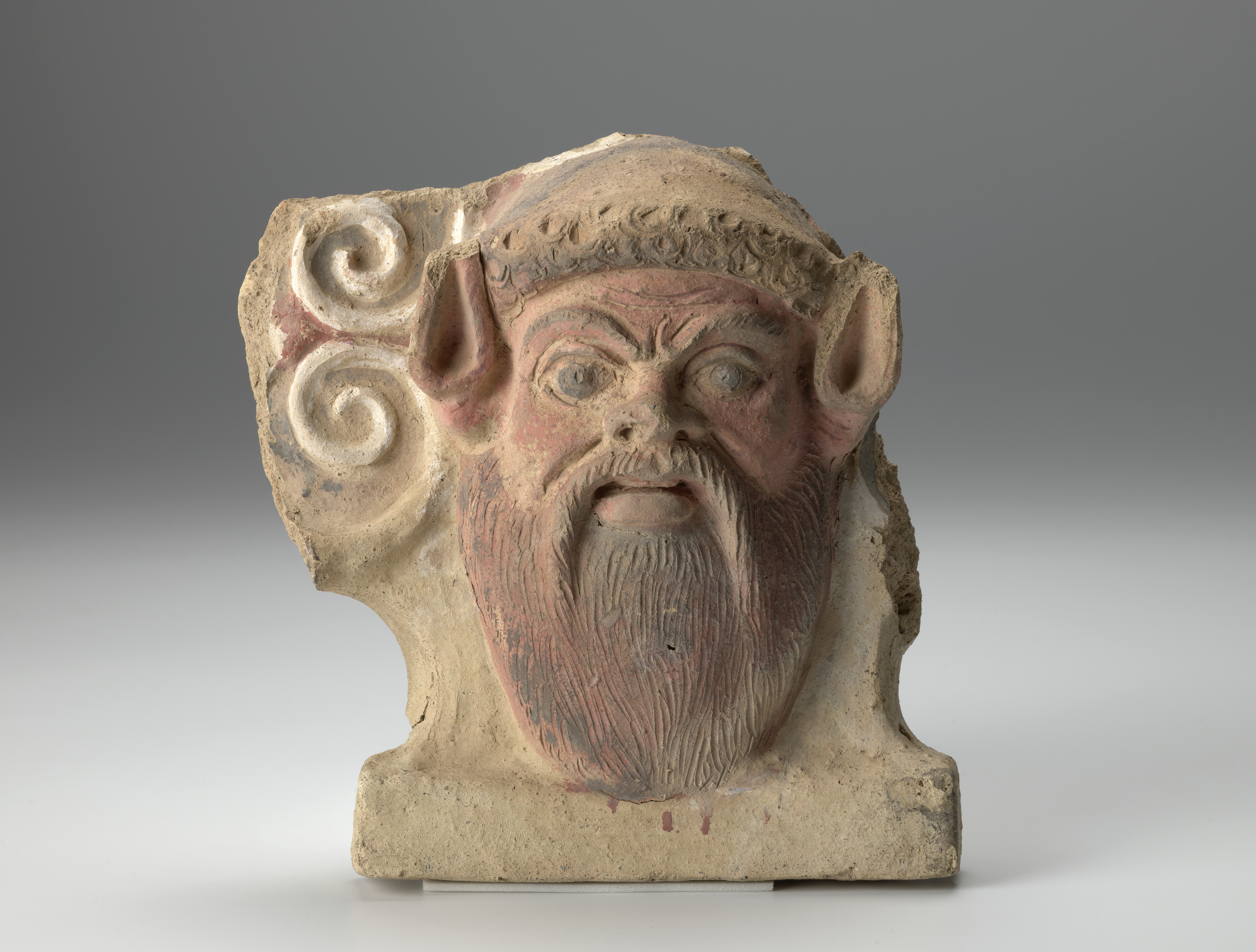Antefix with Head of a Satyr (work of art)
Artwork Info
About
Key Ideas
- This object is an antefix that served as a decoration on a building. Antefixes were placed at the end of a roofline, to cover and conceal the edges of terracotta roof tiles.
- This antefix is made of terracotta, a type of baked clay that was pressed into a mold.
- This is an Etruscan artifact. The Etruscans were an ancient civilization based in Etruria, a region in Italy just north of Rome. The Etruscans traded with other ancient civilizations like the Greeks and Egyptians.
- The subject of this antefix is a satyr. Satyrs were associated with Dionysus, the Greek god of wine and pleasure. Satyrs were forest gods that were part human and part animal.
Learn More
The Etruscan civilization was flourishing by the seventh century BCE. By the second century BCE, the Etruscans were part of the ancient Roman civilization. The Etruscans traded throughout the Mediterranean region. They were also in contact with Greek colonies in southern Italy.
Etruscan buildings were typically built from wood. Terracotta roof tiles and antefixes protected the wood supports of these buildings from the weather and climate. They also served as decorations on Etruscan buildings. Terracotta was an inexpensive material, and it could be replaced easily. It was often formed in molds. Antefixes were common features of Greek and Roman architecture. Etruscan antefixes were widely produced in Caere, a city in southern Etruria.
This antefix has traces of original paint. Common paint colors used on antefixes include red, white, black, blue, green, and yellow-brown. Antefixes often featured the head of a human or mythological figure. Some antefixes had a decorative frame in the shape of a palmette (a design that looks like a palm leaf). Antefixes were believed to ward off evil and bad luck.
The subject of this antefix is the head of a satyr. In Greek mythology a satyr was a forest god who was part man and part goat or horse. This antefix may represent Silenus. He was an older satyr who was considered to be a prophet. Satyrs and other mythological beings (like maenads) were often depicted on the antefixes of Etruscan temples. Maenads were the female followers of Dionysus, the Greek god of wine and pleasure. Both satyrs and maenads were associated with Dionysus. Antefixes with satyrs and maenads were sometimes placed in an alternating pattern along a roofline.
Additional Resources
Resources for Teachers:
- View a similar antefix with the head of a satyr.
- Read an article about Etruscan art.
- Watch a video about Etruscan art and culture.
Resources for Students:
- View a similar antefix with the head of a satyr.
- Watch a video to learn more about satyrs.
- Read an article about the ancient Etruscans.
- Watch a video about Etruscan temples.

